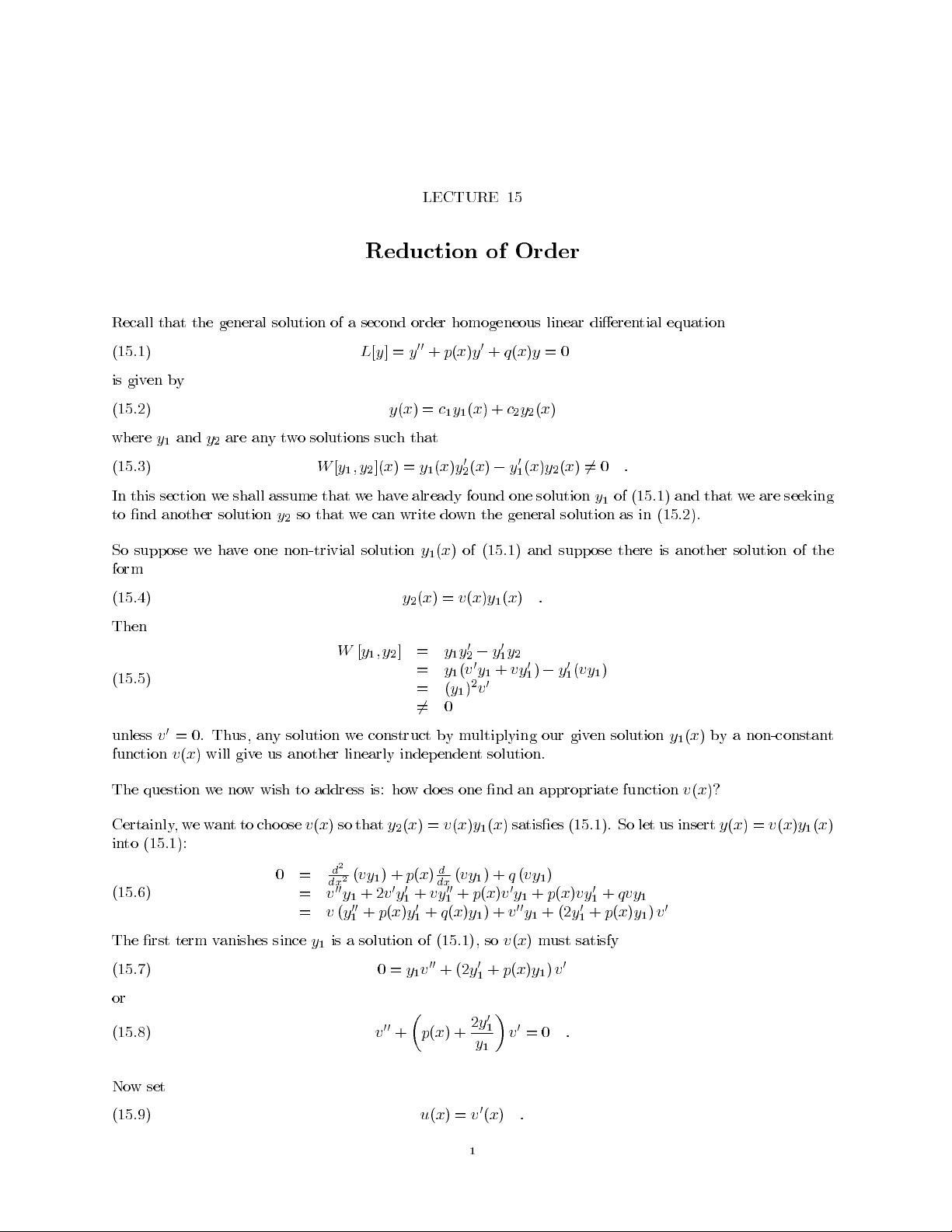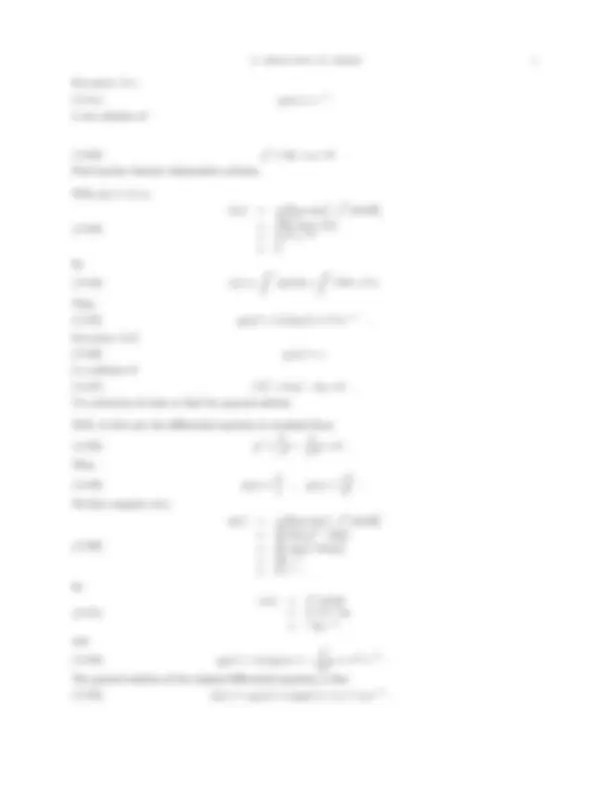



Study with the several resources on Docsity

Earn points by helping other students or get them with a premium plan


Prepare for your exams
Study with the several resources on Docsity

Earn points to download
Earn points by helping other students or get them with a premium plan
Community
Ask the community for help and clear up your study doubts
Discover the best universities in your country according to Docsity users
Free resources
Download our free guides on studying techniques, anxiety management strategies, and thesis advice from Docsity tutors
The technique of reduction of order for finding linearly independent solutions of second order linear homogeneous differential equations. It provides the general solution of a differential equation in terms of two linearly independent solutions and demonstrates the method with two examples.
Typology: Lecture notes
1 / 3

This page cannot be seen from the preview
Don't miss anything!


Recall that the general solution of a second order homogeneous linear differential equation
(15.1) L[y] = y′′ + p(x)y′ + q(x)y = 0
is given by
(15.2) y(x) = c 1 y 1 (x) + c 2 y 2 (x)
where y 1 and y 2 are any two solutions such that
In this section we shall assume that we have already found one solution y 1 of (15.1)and that we are seeking to find another solution y 2 so that we can write down the general solution as in (15.2).
So suppose we have one non-trivial solution y 1 (x)of (15.1)and suppose there is another solution of the form
(15.4) y 2 (x) = v(x)y 1 (x).
Then
= (y 1 )^2 v′
unless v′ = 0. Thus, any solution we construct by multiplying our given solution y 1 (x)by a non-constant function v(x)will give us another linearly independent solution.
The question we now wish to address is: how does one find an appropriate function v(x)?
Certainly, we want to choose v(x)so that y 2 (x) = v(x)y 1 (x)satisfies (15.1). So let us insert y(x) = v(x)y 1 (x) into (15.1):
0 = d
2
d
y 1
1
−
′ 1 (t) y 1 (t)
−
Now note that
so
exp
y 1 (t) dy
= exp
dt (ln [y^1 (t)])^ dt
= exp [−2 ln [y 1 (x)]] = exp
ln
(y 1 (x))−^2
= (^) (y^1 1 (x))^2
Thus, (15.11)can be written as
u(x) =
(y 1 (x))^2
exp
−
−
−
and then setting
(15.18) y 2 (x) = v(x)y 1 (x).
The general solution of (15.1)is then
(15.19) y(x) = c 1 y 1 (x) + c 2 v(x)y 1 (x).
This technique for constructing the general solution from single solution of a second order linear homogene- neous differential equation is called reduction of order.
For those of you who like nice tidy formulae we can write
y 2 (x) = y 1 (x)
(y 1 (s))^2
exp
−
p(t)dt
(15.20) ds
for the second solution.